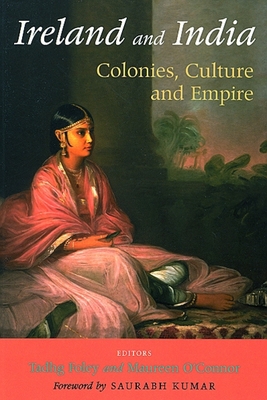Ireland and India
Avtar Sadiq reviews Ireland and India: colonies, culture and empire, Tadhg Foley and Maureen O'Connor (eds), foreword by Saurabh Kumar, Irish Academic Press, ISBN 0 7165 2838 x, £20/€27.50

IRELAND AND India is a fascinating collection of essays presented by twenty eight academics at the Fourth Galway Conference organised by the National University of Ireland in 2004.
It provides an impressive historical account of Irish people who went to India to contribute to the British Raj (colonial rule) in the 19th century. They went as governor generals, civil servants, administrators, engineers, doctors, soldiers, lawyers and Catholic missionaries - the latter enthusiastically undertaking the task of expanding a "spiritual empire" through boasting of "cultural superiority".
These essays offer scholarly focus on cultural and political relationships, from both colonial and anti- imperialist perspectives, based on two centuries of interaction between India and Ireland. Those focussing on various civil servants and administrators and on topics such as education, law, folktale collecting and literary connections highlight the investigative and analytical linkage between Ireland and India.
From the religious angle, there is significant reference to evangelical faith, particularly in relation to the machinations of God in the affairs of man - including through the extension of the marketplace.
The chapter on Yeats points to similarities between Celticism and Orientalism in a simplistic manner and portrays 'a desperate attempt to infuse pre-modern enchantment into the process of modernisation'.
There are chapters on James Cousin and his wife Margaret (Sister Nivedita, a lengendry figure in India but unknown in her native Ireland), who were involved in the national suffrage movements in Ireland and subsequently in India, where they became famous for opposing British imperialism.
Nivedita firmly preached, both as an activist and a writer, that social and cultural regeneration was impossible for India while it remained politically and economically subjugated.
Nivedita also met Annie Beasant, an Irish woman who became the first women president of the Indian National Congress party, who gave direction to the idea of Home Rule League. Both Nivedita and Beasant had links with Gandhi and Tagore.
There are six chapters on nationalism and a chapter on Sinn Fein and Gadar Party - the Party of Revolt formed in San Francisco in 1913 by the Indian residents who took initiative to organise rebellion in the Indian army against the British rulers.
These chapters provide an outline of the modern phase of India's freedom struggle during the First World War, a period during which the hope of Indian nationalists of snatching independence from Britain were raised. The 'ideological churning' of the 1920s, ideological produced three distinct visions concerning the character of Indian independence.
The Congress Party of India envisioned India to be a secular and democratic republic, with federalism, social justice and economic self reliance central to its outlook. This trend became the mainstream of the people's movements.
The left worked to convert the Congress vision into one of socialism, while the right-wing view, which can be found in the chapter 'The Spatial Ideologies of the Orange and Saffron Order in Northern Ireland and India', was based on a theocratic perspective. The concept of Hindutva is a political slogan of the Bhartya Janata Party (BJP), which aims to turn the secular and democratic republic of India into a fascistic " Hindu Rashtra" (Hindu state).
The academic contributors on nationalism perhaps deliberately ignored the focus on the policies of the British rulers, which resulted in the division of both Ireland and India on religious grounds.
Nevertheless, this book is a significant contribution on colonial/post colonial perspectives on politics and cultural history and opens up field for further studies to investigate the impact of socialist revolution in the USSR and east European countries on the national liberation movements in India and Ireland.
Connolly Association, c/o RMT, Unity House, 39 Chalton Street, London, NW1 1JD
Copyright © 2007 Avtar Sadiq

